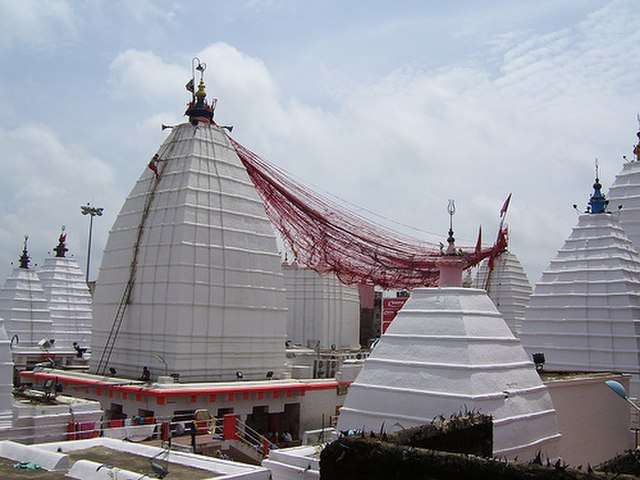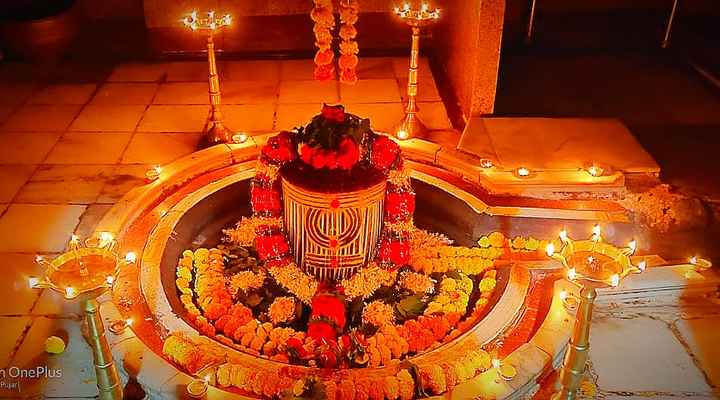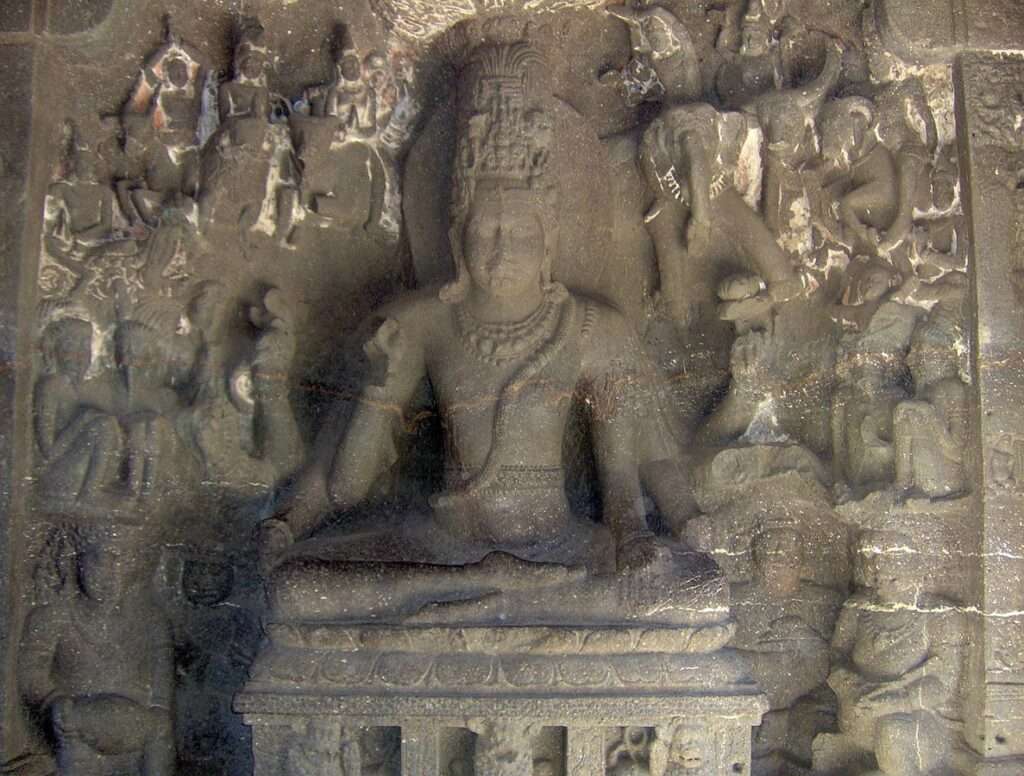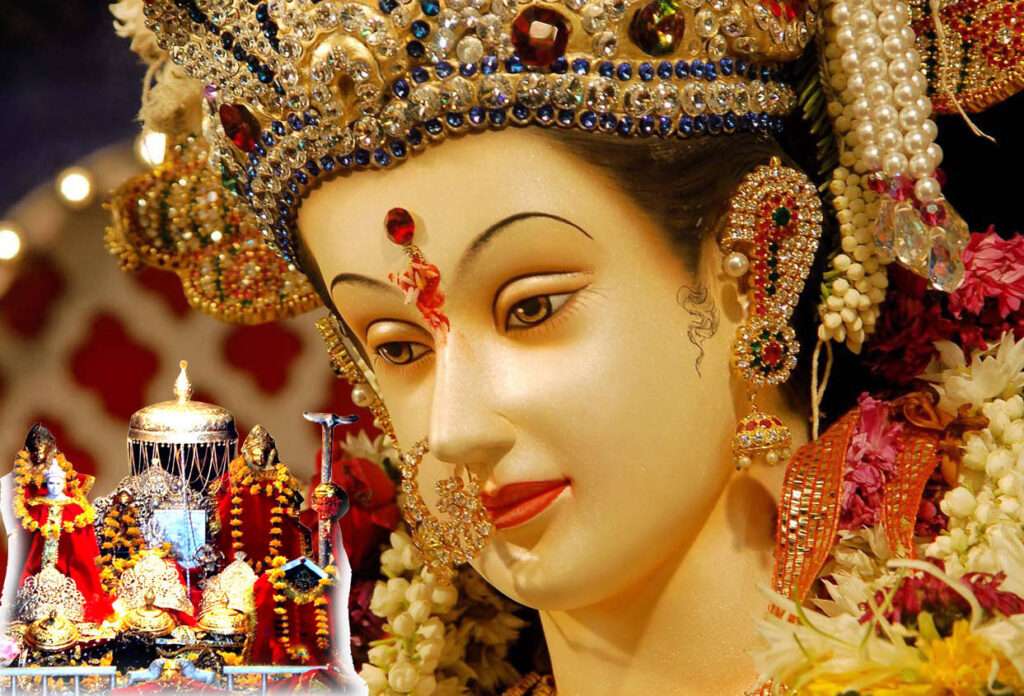Introduction
Baidyanath Dham, also known as Baba Baidyanath Dham or Vaidyanath Dham, is one of the twelve Jyotirlingas, the most sacred abodes of Lord Shiva. It is located in Deoghar, a town in the Santhal Parganas division of Jharkhand, India. It is a temple complex consisting of the main temple of Baba Baidyanath, where the Jyotirlinga is present, and 21 other temples.
In this blog post, we will explore the history, legends, significance, festivals and rituals of Baidyanath Dham, and also provide some useful information for pilgrims who wish to visit this holy place.
Table of Contents
History of Baidyanath Dham
The history of Baidyanath Dham is shrouded in mystery and mythology. According to some sources, the temple was built by Raja Puran Mal, a king of the Chero dynasty, in the 16th century. However, some scholars believe that the temple is much older and dates back to the 8th or 9th century.
The temple has been renovated and expanded several times over the centuries by various rulers and devotees. The present structure of the temple is mainly attributed to Maharani Ahilyabai Holkar of Indore, who rebuilt the temple in 1782. The temple complex also houses several other shrines dedicated to various deities such as Parvati, Ganesha, Hanuman, Kalabhairava, Nandi and others.
How to Reach Baidyanath Dham
Here are the ways to reach Baidyanath Dham from major cities of India:
By Train:
- The nearest railway station to Baidyanath Dham is Jasidih Railway Station, which is 7 kilometers away. Trains from major cities like Delhi, Mumbai, Kolkata, Ranchi, Patna, and Varanasi connect to Jasidih Railway Station.
[Image of Jasidih Railway Station in Deoghar] - You can also take a train to Deoghar Railway Station, which is 5 kilometers away. From Deoghar Railway Station, you can take an auto rickshaw or taxi to reach Baidyanath Dham.
By Bus:
- There are direct buses from major cities like Patna, Ranchi, and Kolkata to Deoghar. You can also take a bus from Jasidih Railway Station to Deoghar.
[Image of Deoghar city in India]
By Flight:
- The nearest airport to Baidyanath Dham is Deoghar Airport, which is 12 kilometers away. Flights from major cities like Delhi and Kolkata connect to Deoghar Airport.
By Road:
- Baidyanath Dham is well connected by road to major cities in India. You can drive your own car or take a bus or taxi to reach Baidyanath Dham.
Here are the distances and travel times from major cities to Baidyanath Dham:
| City | Distance (km) | Travel Time (hrs) |
|---|---|---|
| Delhi | 877 | 13 |
| Mumbai | 967 | 14 |
| Kolkata | 352 | 6 |
| Ranchi | 125 | 2 |
| Patna | 198 | 3 |

Legends of Baidyanath Dham
There are many legends associated with Baidyanath Dham, but the most popular one is related to Ravana, the demon king of Lanka. According to this legend, Ravana was doing penance in the Himalayan region to appease Lord Shiva. He presented nine of his heads as an offering to Lord Shiva. Upon preparing to sever his tenth head, Shiva manifested before him, expressing satisfaction with the offering and inquiring as to what boon he desired.
Ravana asked to take the “Kamna Linga” (the lingam that fulfills all desires) to Lanka. He also expressed his desire to take Lord Shiva from Kailash to Lanka. Lord Shiva acquiesced, with a stipulation. He said that if the lingam was positioned en route, it would become the abode of the deity and could never be moved.
When the gods of the celestial world heard that Lord Shiva had left his home on Mount Kailash, they were worried. They sought resolution from Lord Vishnu. Lord Vishnu asked Varuna, the deity associated with water, to enter Ravana’s stomach through achaman (sipping water from the palm of the hand). Consequently, after performing the ritual of achaman, Ravana departed for Lanka with the lingam and experienced the need to urinate in the vicinity of Deoghar.
The story goes that Lord Vishnu took the form of a cowherd named Baiju and offered to hold the lingam for Ravana while he relieved himself. However, as soon as Ravana handed over the lingam to Baiju, he placed it on the ground and ran away. Ravana tried to lift the lingam but failed. He realized that he had been tricked by Lord Vishnu and became furious.
He tried to uproot the lingam with his force but only managed to break some pieces from it. These pieces fell at different places and became sacred sites themselves. One piece fell at Chandrakona in West Bengal (known as Chandranath), another at Panchvati in Maharashtra (known as Trimbakeshwar), another at Ujjain in Madhya Pradesh (known as Mahakaleshwar) and another at Omkareshwar in Madhya Pradesh (known as Omkareshwar).
Ravana then prayed to Lord Shiva for forgiveness and mercy. Lord Shiva appeared before him and cured his wounds. He also blessed him with boons that made him invincible and powerful. However, he also warned him not to misuse his powers and advised him to follow righteousness.
As Lord Shiva acted as a doctor (vaidya) for Ravana, he came to be known as Vaidyanath or Baidyanath at this place. The cowherd Baiju also became immortalized as Baijnath or Baiju Baba.

Significance of Baidyanath Dham
Baidyanath Dham is considered one of the most sacred places for Hindus as it is one of the twelve Jyotirlingas, the manifestations of Lord Shiva. It is believed that by visiting Baidyanath Dham, one can attain salvation (moksha) and fulfill all desires (kamna). It is also said that by offering water to the lingam, one can wash away all sins and diseases.
Baidyanath Dham is also revered by Buddhists and Jains as it is believed that Gautama Buddha and Mahavira, the founders of these religions, visited this place and meditated here. The temple complex also has a shrine dedicated to Tara, a Buddhist goddess.
Baidyanath Dham is also a center of tantric practices and rituals. Many sadhus and yogis come here to perform penance and seek blessings from Lord Shiva. The temple also has a rare idol of Agni, the god of fire, which is worshipped by tantrics.
Festivals and Rituals of Baidyanath Dham
Baidyanath Dham celebrates many festivals throughout the year, but the most important ones are Maha Shivaratri and Shravani Mela.
Maha Shivaratri is the festival of the night of Lord Shiva, which falls in the month of February or March. On this day, devotees observe fasts and offer prayers to Lord Shiva throughout the night. They also perform abhishek (ritual bathing) of the lingam with milk, water, honey, curd, ghee, sandalwood paste and flowers. They also chant mantras and sing bhajans in praise of Lord Shiva.
Shravani Mela is the month-long festival that takes place in the month of July or August. It is also known as Kanwar Yatra, as millions of devotees carry water from the Ganges in pots (kanwars) on their shoulders and walk for hundreds of kilometers to offer it to Lord Shiva at Baidyanath Dham. This ritual is believed to be a symbol of devotion, sacrifice and penance. The devotees are known as kanwariyas or bhole (the innocent ones).
The kanwariyas wear saffron clothes and adorn themselves with rudraksha beads and tridents. They also chant “Bol Bam” (say Shiva) or “Har Har Mahadev” (hail Shiva) along the way. They also observe strict rules of purity and celibacy during their journey. They also avoid touching any metal or leather objects.
The kanwar yatra culminates on the full moon day of Shravan month, when the kanwariyas offer their water to Lord Shiva at Baidyanath Dham. They also perform other rituals such as circumambulating the temple, offering flowers and fruits, lighting lamps and incense sticks, and seeking blessings from the priests.
Tips for Pilgrims
- The best time to visit Baidyanath Dham is during the winter season (October to March), when the weather is pleasant and comfortable.
- The temple timings are from 4 am to 9 pm. However, during Shravani Mela, the temple remains open for 24 hours.
- The entry fee for the temple is Rs 10 per person. There are also special darshan tickets available for Rs 50 per person.
- Photography and videography are not allowed inside the temple premises.
- One should dress modestly and respectfully while visiting the temple. One should also remove shoes and leather items before entering the temple.
- One should not carry any valuables or electronic items inside the temple as there are no locker facilities available.
- One should follow the instructions of the temple authorities and maintain discipline and decorum while visiting the temple.
- One should not litter or pollute the temple premises or the surroundings.
- One should respect the sentiments and beliefs of other devotees and locals.
Conclusion
Baidyanath Dham is a place of immense spiritual significance and beauty. It is a place where one can experience the presence and grace of Lord Shiva in his various forms. It is a place where one can witness the devotion and faith of millions of pilgrims who come here every year to seek blessings from Lord Shiva. It is a place where one can feel the peace and tranquility that transcends all worldly troubles.
Frequently asked questions
- What is Baidyanath Dham?
Baidyanath Dham is a Hindu pilgrimage site located in Deoghar, Jharkhand, India. It is one of the twelve Jyotirlingas, which are the holiest of all Shiva temples in Hinduism. The temple is dedicated to Lord Shiva, and is also known as the Baba Baidyanath Temple.
- What is the significance of Baidyanath Dham?
Baidyanath Dham is considered to be one of the most important pilgrimage sites in Hinduism. It is believed that the heart of Sati, the wife of Lord Shiva, fell here after she was killed by her father, Daksha Prajapati. The temple is also said to have been built by Ravana, the king of Lanka.
- What are the best times to visit Baidyanath Dham?
The best time to visit Baidyanath Dham is during the months of November to February, when the weather is pleasant. However, the temple is open all year round, and there are always pilgrims visiting.
- What are the dos and don’ts at Baidyanath Dham?
Here are some dos and don’ts at Baidyanath Dham:
- Dos:
- Dress modestly.
- Remove your shoes before entering the temple.
- Offer prayers to Lord Shiva.
- Take a dip in the holy pond.
- Visit the other temples in the area.
- Don’ts:
- Eat non-vegetarian food.
- Smoke or drink alcohol.
- Argue or fight with anyone.
- Take pictures or videos inside the temple.
- What are the facilities available at Baidyanath Dham?
There are a number of facilities available at Baidyanath Dham, including:
- Accommodation: There are a number of hotels and guesthouses in Deoghar, as well as some ashrams and temples that offer accommodation to pilgrims.
- Food: There are a number of restaurants in Deoghar that serve vegetarian food. There are also a number of stalls in the temple complex that sell food and snacks.
- Transportation: There are a number of buses and trains that connect Deoghar to other major cities in India. There is also an airport in Deoghar, which is served by a number of domestic flights.


